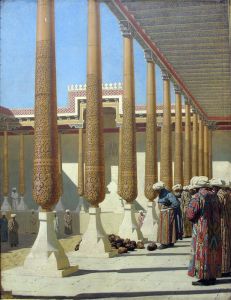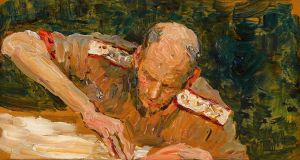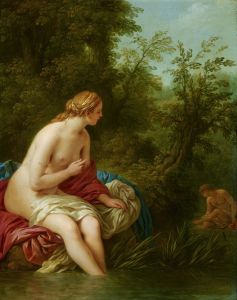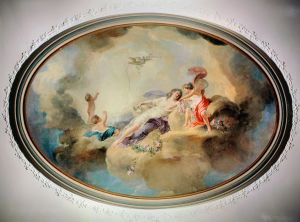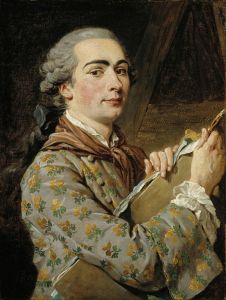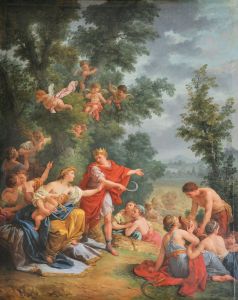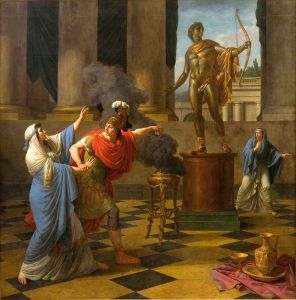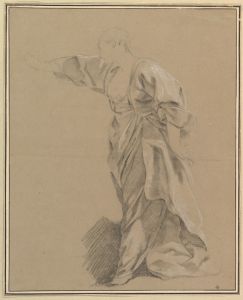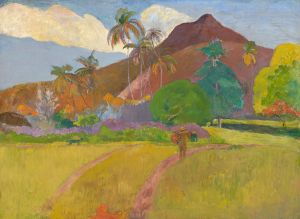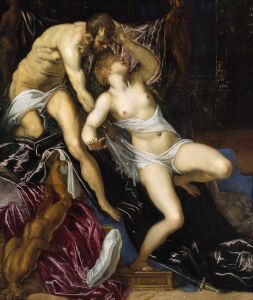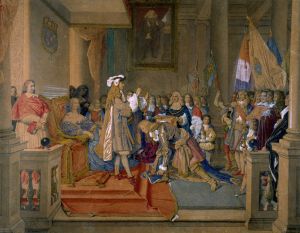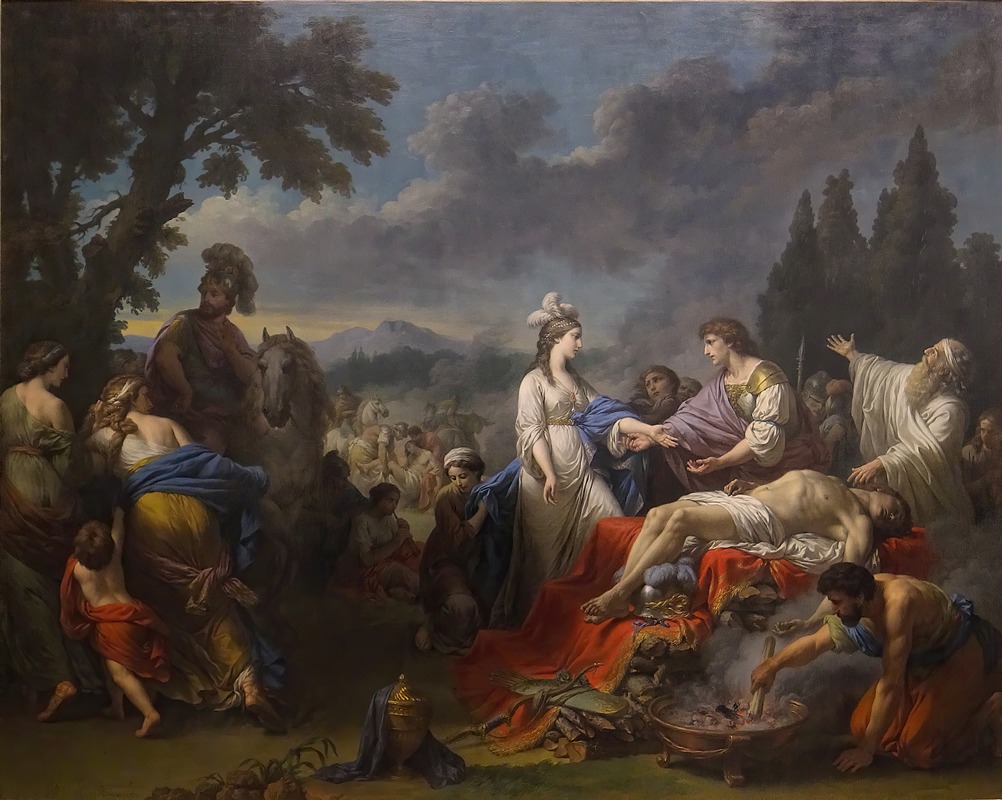
Les deux veuves d’un chef indien se disputant les honneurs du bûcher
A hand-painted replica of Louis-Jean-François Lagrenée’s masterpiece Les deux veuves d’un chef indien se disputant les honneurs du bûcher, meticulously crafted by professional artists to capture the true essence of the original. Each piece is created with museum-quality canvas and rare mineral pigments, carefully painted by experienced artists with delicate brushstrokes and rich, layered colors to perfectly recreate the texture of the original artwork. Unlike machine-printed reproductions, this hand-painted version brings the painting to life, infused with the artist’s emotions and skill in every stroke. Whether for personal collection or home decoration, it instantly elevates the artistic atmosphere of any space.
Louis-Jean-François Lagrenée's painting "Les deux veuves d’un chef indien se disputant les honneurs du bûcher" is a work that reflects the 18th-century European fascination with exotic and foreign cultures, a common theme during the period of Enlightenment and colonial expansion. Lagrenée, a prominent French painter born in 1724, was known for his classical style and his ability to capture dramatic narratives in his works.
The painting's title translates to "The Two Widows of an Indian Chief Disputing the Honors of the Funeral Pyre," suggesting a scene of cultural ritual and conflict. The subject matter likely draws on European interpretations of non-European customs, particularly those of indigenous peoples, which were often romanticized or misunderstood by Western artists and audiences of the time. This painting is an example of how artists like Lagrenée engaged with themes of otherness and the exotic, reflecting broader societal interests in the so-called "noble savage" and the customs of distant lands.
Lagrenée was a student of Carle Van Loo and became a member of the Académie Royale de Peinture et de Sculpture in 1755. His career included significant commissions and appointments, such as being named the director of the French Academy in Rome. His works often featured mythological and historical subjects, rendered in a style that combined elements of Rococo with the emerging Neoclassical aesthetic.
In "Les deux veuves d’un chef indien se disputant les honneurs du bûcher," Lagrenée likely employs a dramatic composition to convey the emotional intensity of the scene. The painting would have been intended to evoke both the viewer's curiosity about foreign customs and a sense of moral or philosophical reflection, in line with Enlightenment ideals. The depiction of the widows' dispute over the funeral pyre honors may symbolize themes of loyalty, sacrifice, and the human condition, common motifs in Lagrenée's oeuvre.
While specific details about the painting's composition, such as its size, medium, and current location, are not provided here, it is consistent with Lagrenée's known body of work, which often featured carefully composed figures and a balanced use of color and light to enhance the narrative. His paintings were well-regarded for their technical skill and emotional depth, contributing to his reputation as a leading artist of his time.
The painting's portrayal of indigenous peoples should be understood within the context of 18th-century European art, which frequently reflected colonial attitudes and a lack of authentic understanding of the cultures being depicted. Such works are valuable for studying the historical perspectives and artistic conventions of the period, even as they reveal the biases and limitations of their creators.
Overall, "Les deux veuves d’un chef indien se disputant les honneurs du bûcher" exemplifies Lagrenée's engagement with dramatic storytelling and his interest in themes that resonated with the intellectual currents of his era. As with many historical artworks, it offers insights into the cultural and artistic milieu of its time, while also prompting contemporary viewers to consider the complexities of cultural representation in art.





